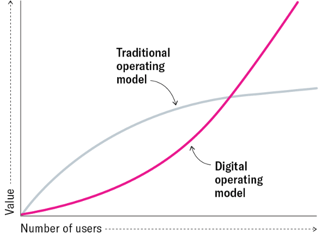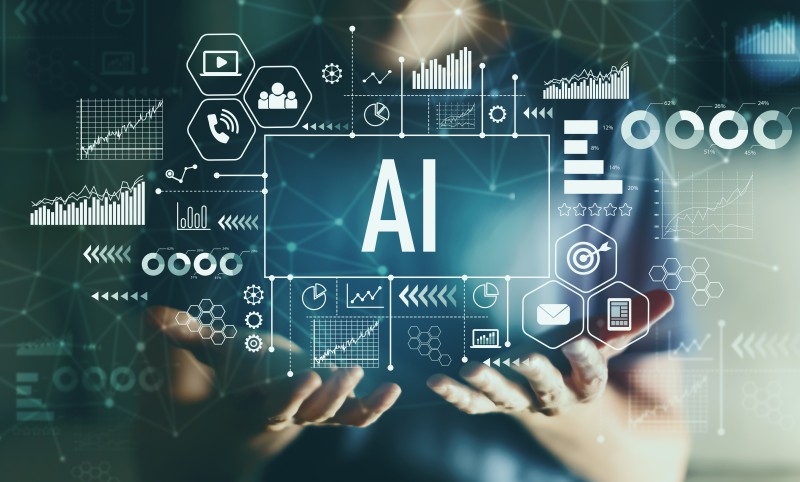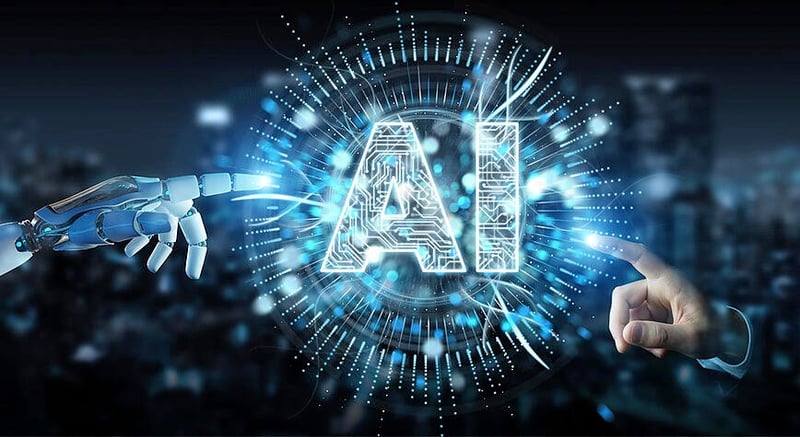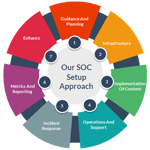AI-Driven Companies Outpacing Traditional Firms
Understanding the revolutionary impact that Artificial Intelligence (AI) has on operations, strategy and competition is a must for every business leader. It becomes even more important, especially if you’re planning to launch a digital start-up, or looking to revamp your traditional business.
The age of AI is being guided by the emergence of new kinds of firms, where the real value comes from algorithms, rather than traditional business processes.
Today, AI sets the prices on Amazon, recommends songs on Spotify, matches buyers and sellers on Indigo’s marketplace, and qualifies borrowers for an Ant Financial loan.
‘Leading organizations expect to double the number of Artificial Intelligence (AI) projects in place within the next year, and over 40% of them plan to actually deploy AI solutions by the end of 2020.’ - Gartner
Recently, we have seen a couple of global financial institutions taking a novel AI approach wherein, there are no workers but AI is running the whole show. They have incorporated digital at the heart of the business model driven by AI with no human interference – no managers approving a loan, and no employee providing financial advice. This way, these innovative banks are on a different landscape bundled with new opportunities and witnessing tremendous growth.
Today’s AI advocates the emergence of new kind of businesses altogether, wherein the real value comes from algorithms, rather than from traditional businesses processes, which are operated by managers, front office or customer service. It is purely driven by math and smart algorithms. Some argue that the smart algorithms are designed by humans! But after designing, the system delivers value on its own with minimal or zero human intervention. Isn’t it smart?

( Image Source: hbr.org )
When the traditional constraints are removed, AI creates new rules for the competition. We will see in near-future that digital networks and algorithms will make way into the fabric of firms, businesses and begin to operate on a different level. These changes will force traditional businesses to rival and face new AI business models. Many global giants are investing time and money in understanding and incorporating data, algorithms and digital networks to keep pace with the digital era.
The Fast Evolving AI - How it Reshapes Future AI Businesses
A new McKinsey Global Institute report estimates that with the current level of advancements, automation could raise productivity growth globally by 0.8 to 1.4 percent annually.
What’s unique about the study is the finding that despite the substantial potential of applying Deep Learning techniques to use cases across the economy, there are limitations and obstacles, chiefly owing to improper understanding of the technologies. In a sense, the value of AI is not to be found in the models themselves, but in the companies’ ability to harness them.
While AI has not just been disrupting industries, businesses, and technologies, it has been leaving a profound impact - shaping and redefining future business models. Many industry experts are of the view that future AI companies will be evolving beyond technology, much like an extension of traditional software companies. But our study on AI provides a uniquely different perspective – furnishing a deeper analysis on future AI companies, their evolution, growth and environment in which they operate. We’ll learn how AI is creating an essentially new type of business.

Here are the key pointers and learnings that I’d like to share with all AI enthusiasts, especially the AI founders.
- AI companies will be very dissimilar to traditional software companies because many of the AI companies simply don’t have the same economic construction as software businesses
- Many AI companies have less gross margins due to heavy cloud infrastructure/dependency/usage and continued human support to AI
- Scaling challenges due to the pressing problem of edge cases: Many AI apps have open-ended interfaces with lots of unstructured data (image & natural language) with 40%-50% of intended AI functionality residing on edge i.e., longtail of user content
- AI environment has weak defensive fortification walls when compared to the software companies. The reason includes commoditisation of AI models, challenges with data network effects and lack of technical differentiation. Additionally, factors like its nascent evolving nature that largely depends on the open source library environment and the work done on AI being still academic and industry-oriented has a bearing on AI environment.
Does AI Constitute Software or Service or Both?
By and large AI environment, its nature and businesses are very different from traditional software companies. It’s most likely that they will combine the best of both software and services worlds.
Software: The major advantage for today’s software, including SaaS, is that it can be developed once and sold multiple times resulting in recurring revenue streams that are super-linear in scale with gross margins of 60%-80%. They are protected by Intellectual Properties (typically the code generated by the work).
Service Business: It requires headcount and can be sold only once. The revenue streams are non-recurring & gross margins lower than 30%-40%. Scaling is ‘just’ linear at the best optimized level.
Software & Services: AI companies are increasingly combining the best of both worlds- software & services with better gross margins, scaling, and building better defence systems for AI businesses. It results in the emergence of an entirely new class of AI businesses altogether.
A number of AI companies that planned to sell pure software products are increasingly bringing services capability in-house and booking the associated costs.
Cloud infrastructure comprises the major chunk and there’s a hidden cost in store for AI companies.
The data ingress and egress, and taking data out of the cloud is proving to be more expensive compared to the data migration costs & placing data on the cloud. Most big companies pay huge amounts to AWS & Azure depending on the demand for the software.
Challenges With AI Models
- Training an AI model can cost you thousands of dollars. What may seem like a normal initial upfront cost could end up being costly. Retraining an AI model turns out to be an ongoing cost since the data that feeds AI models tends to change over time.
- Generating predictions through advanced AI Model inferencing is considered a lot tougher and complex process that requires execution expertise involving long matrix math computation.
- At the heart of an AI application lies trained data models, which deal with rich images, audio, video, natural language and application consuming more data and storage, and is also expensive to process. For example, it may need to process a large file to find a small and relevant snippet.
- Lack of expert tools that scale AI are forcing it to depend more on the cloud and transferring trained models across cloud regions for achieving big ingress and egress costs to improve reliability, latency, and compliance.
The above challenges force AI companies to spend up to 25% of their revenue on cloud resources. Although, many start-ups have found manual data processing much cheaper than executing a trained model.
Despite the ongoing situation, specialized processors may help in executing complex math computations with more efficiency & optimization methods like model compression & cross-compilation that reduce the number of computations required.
Human Collaborated AI Processes
Many AI applications take support of humans in the AI process loop to function efficiently bringing great degree of accuracy and contributing to lower gross margins for many AI start-ups.
Most of AI models are very expensive, as they involve manual cleaning and labelling of large datasets. This process is cumbersome, expensive and is serving as the biggest roadblock for an increased adoption of AI.
Additionally, the training doesn’t end with the deployment of a model. Many AI companies incur 10%-15% costs for maintaining accuracy, which is achieved by continually capturing new training data, labelling and is then fed back into the system. Proving that developmental work is more laborious, it is exceeding beyond typical bug fixes and feature additions.

More and more human-AI systems will be working in collaboration. Humans are put upfront in AI systems for cognitive reasoning. Many social media executives are employed for AI-based content moderation. Similarly, even in autonomous vehicles – they’re complex. So, issues of safety, fairness, and trust also demand meaningful human oversight, etc. Remote human operators are present ensuring human safety. Similarly, in healthcare, more Physician-AI based medical devices collaboration is happening and they both remain as joint decision-makers. While the chances that the humans will be cut out of the loop entirely is rare, as the AI models become more trustable and efficient, the need for human intervention will gradually decline.
The basic function of an AI application is to process a stream of input data and generate relevant predictions whether it is being handled by humans or AI. Both, humans and AI systems can be optimized but none will reach the near-zero cost levels associated with SaaS businesses.
AI Systems Can be Tougher than Expected as AI Lives in the Long Tail
Most of the AI apps have open-ended interfaces and operate in a noisy, unstructured data environment such as images or natural language. Often, users lack the right intuition with regards to the product. Even worse, they assume it to possess super capabilities. It can only mean one thing – the edge cases are everywhere! AI products’ intended functionality can reside in the long tail of user intent (edge) to up to 40-50%. To put it in a different way- users can, and will, enter just about anything into an AI app.
The guidelines for defending your AI businesses are still in formulation!
With lesser technical differentiation in the AI world, new architectures and models are being developed in an open source environment and academic settings. With reference implementations available via open libraries, model operators can be optimized automatically. So, the moats for AI companies, unlike software companies, appear to be shallower than expected.
Quick Recommendations on Building, Scaling & Defending Great AI Companies
For AI companies’ long-term sustenance and success, owning challenges is key. AI businesses should combine the best of both software and services to thrive in their new or existing AI apps.
Removing model complexity for the maximum effect
Understanding your customers, their data and the problem domains has to be the single most important challenge for AI founders before signing off a deal. For example, a new customer will consume more time causing a major fork in your ML engineering efforts. The changes may be of a minute nature involving finetuning of models, etc. So, narrowing down the options and making these quick decisions, trading off long-term benefits versus near-term growth, etc., can reduce data complexity to a major extent.
Have a plan for measuring high variable costs
You should have a deep understanding of data feeds that go into the AI models, consider model maintenance and chances of human failure as first-degree problems. Additionally track down and measure the real variable costs and do not let it sink into your research & development. Make conservative unit economic assumptions in your financial models, especially during fundraising. Do not wait for outside technological advantages or scale to solve the problem.
Embracing 'Services' provides the key insights into customer needs
Services can serve as a great tool to kickstart a company’s go-to-market engine, especially when selling complex or brand new technology. It provides with a deeper insights into customer needs and produces fast-growing and market innovating companies. Pursue and execute one strategy perfectly rather than supporting both software and services customers.
Have a flexible plan in place facilitating change in the technology stack
Modern AI is still in its budding stage awaiting for efficient tools, which are yet to be made. But we are sure a wide availability of tools will emerge that will help automate model training, making inference far more powerful and standardizing the developer workflows, while monitoring and securing the AI models in production. The rising cost issue in cloud computing is coming to the surface faster and needs a quick solution too. Again, forcingly coupling an application to the current way of doing things may lead to an architectural disadvantage in the future.
Building Defensibility for AI Businesses - The Old Traditional Way!
Good products and proprietary data almost always build good businesses. This has been the businesses’ good old dictum. On the contrary, it is unclear whether an AI model or the underlying data can provide the required fortification and security – like a long term sustenance wall for AI company’s business growth. So, we add a new angle to an old problem. We build strong enduring products initially adding unique product capabilities that are evergreen. Recently we’ve seen many AI companies cementing their market position through an effective cloud strategy, a strategy similarly adopted by the recent opensource companies.
Summary
Overall, the future of AI companies is not like software companies as AI businesses involve continued human cognitive support to AI. The scaling is not as easy as we’d have imagined. Strong defensibility, which is vital for ‘build once and sell many times’ software model, doesn’t appear to come free. Maybe, over a period of time with improved technological efficacy resulting in reduced costs and market-wide adoption, it may happen. These qualities make AI much like a service business. The good part is that the scaling dynamics, defensive moats, and variable costs are all determined by market rather than individual businesses. There are few AI innovators who have left a trail of building successful products doing consistently good with their performances. The unfamiliar pattern suggested by data indicates that the AI market is new, providing huge market opportunities further forcing the emergence of new markets.
References:
Competing in the Age of AI: Harvard Business Review
The New Business of AI (and How It’s Different From Traditional Software): Andreessen Horowitz




